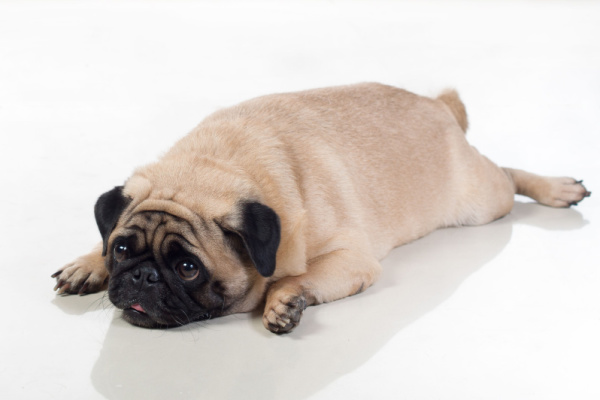Pets come in all shapes and sizes, but sometimes sizes get a little out of hand. That’s why on October 11, we recognize World Pet Obesity Awareness Day to remind people to keep their pets healthy. When your pooch starts getting a little plump, you know it’s time for a few things . More walks, less table scraps, and perhaps even an additional visit to the vet to make sure they’re still healthy.
While humans have domesticated animals for hundreds of years, only most recently have we seen such an exponential increase of plus-sized pets. While it’s hard to say no to those precious faces when it comes to food, it’s important to practice discipline for the safety and well-being of our beloved companions. According to the Association for Pet Obesity Prevention (APOP), in the United States, 59% of dogs and 61% of cats were classified as overweight of having obesity in 2022.
It starts with recognizing there is a problem. Pet owners think their obese dog or cat is a normal weight, making confronting obesity difficult. No one wants to think their pet is overweight, and overcoming denial is our first battle. Currently more than half of all domestic dogs and cats are clinically overweight, which is to say their body condition score is above a four. That amounts to nearly 49 million dogs and more than 50 million cats who are a bit portlier than their peers. This can lead to serious health issues for these animals including diabetes, arthritis, decreased life expectancy, high blood pressure and cancer. Not only will it be hard for your pet, but it will be hard for you to watch, not to mention these conditions can quickly become very costly.
The good news is that pet obesity can be easily prevented by taking a few cautionary steps.
How to Help Your Overweight Pet
Step 1: Identify if your Pet Needs Help.
There are several ways to find out for certain if you need to put your pet on a restrictive diet. One of the easiest is to consult the resources offered by APOP, which include easy to use at-home body condition tests. Sometimes, we may not even be aware when our pets become overweight, so it’s important to know at what point it becomes a medical problem.
Step 2: Take the APOP Survey.
Every year, APOP conducts a survey on World Pet Obesity Awareness Day, which helps collect data from around the country. This information is then used to create a snapshot of the state of pet obesity, and help put together a plan to tackle it. By taking part in the survey, you’re doing your part to help take on this challenging issue.
Step 3: Consult with Your Vet and Start a Weight Loss Plan.
Before beginning a weight loss program, schedule a vet exam to rule out any possible underlying medical issues. You can also determine your pet’s current Body Condition Score (BCS) and ideal or target weight. With your vet, you will be able to choose the right body condition and target weight for your dog’s gradual, safe, weight loss plan, including calculating your pet’s Daily Energy Requirements (DER) in terms of calories needed. Feeding too much will result in no weight loss and feeding too little can be harmful.
Step 4: Start an Exercise Program like Walking or Playing.
If you’ve been neglecting getting your dog out of the house, make today the day to go for a walk around the neighborhood. Give it freedom to romp and sniff, and run if given the opportunity. Or even better, head to the local dog park, where it can socialize with other dogs and run off-leash for great, sustained exercise.
Losing weight can be challenging, whether for pets or people. The great news is that shedding excess pounds can improve your pet’s life expectancy and overall quality of life making those additional years more enjoyable. Excess weight in pets can lead to debilitating health issues, making weight management essential for a pets well-being. By working with your veterinary healthcare team and maintaining a healthy weight for your pets, you can help ensure a longer, happier life together.
—
Photo Credit: Aseph / Shutterstock.com
